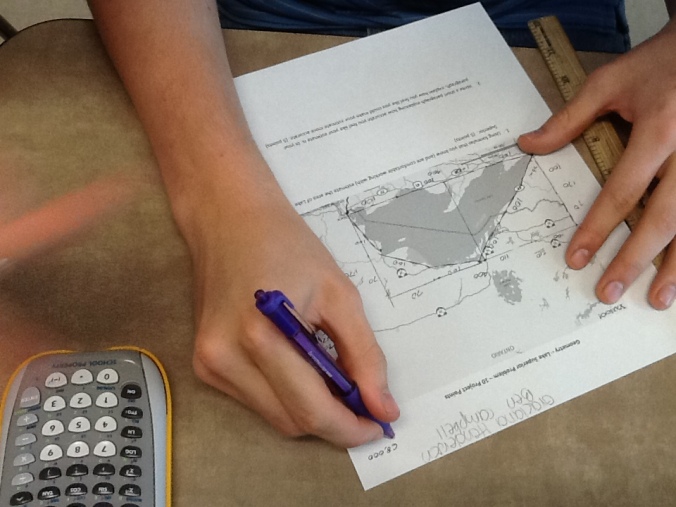Today we did The Lake Superior Problem. In keeping with the basic theme of my previous post, this problem has a very easy to understand task. What’s the area of the lake?
Then the fun begins as you watch the students explore the different options for taking a rather bizarre shape and inject familiarity to it. There isn’t a formula for the area of Lake Superior. So, what can we do?
Above was the most accurate response and also the least used method.
This was a similar approach. Still seldom used. Still quite accurate.
This group found it useful to have an image they could manipulate better. A see through sheet of patty paper helped them.
This group asked for string so they could get an accurate perimeter measurement. They found that the perimeter was not an incredibly helpful measurement, but better they explore than I shut down ideas.
Many students saw the lake as a “sort-of triangle” and measured and calculated accordingly.
Said this team, “There’s only five different circles. Once you know the area of each of them, you just count, multiply, and add them up.”
I continue to find it fascinating that these students, who struggle with scale, area formulas, identifying polygons, and other mathematical skills in isolation struggle less with them in the context of an approachable task.






Our decomposition area problems are of a different nature:
http://fivetriangles.blogspot.com/2012/04/area-problem.html
http://fivetriangles.blogspot.com/2013/02/45-overlapping-circles.html
I would agree. What do you feel are the benefits of your approach?
I recall having essentially the same problem — finding the area of the state of Pennsylvania — as a workbook exercise for a calculus I course I TA’d for. (They were figuring people to do it by decomposing the state into one big rectangle, one Erie triangle, and then a bunch of trapezoids, along the Delaware River.)
I’m not sure this actually taught the trapezoid rule for Integration very well, but it did certainly teach that some problems are going to have a lot of tediously entering data into something before the computer does it in a flash.